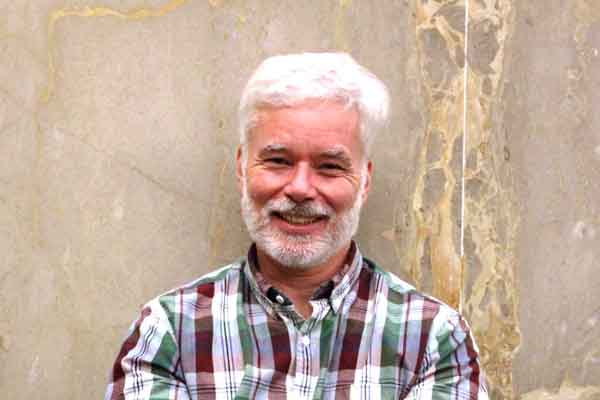Innovation for Agenda 2030
Better data to help aid agencies, private philanthropies, and partners in the Global South avoid missing the mark
Photo: UN Photo/Cia Pak
Overview
What can we learn from SDG-classified Official Development Finance (ODF) data?
High-profile commitments and ambitious strategies are not enough to ensure that low- and middle-income countries are on track to realize the Global Goals. As a case in point: the annual financing gap for the Global South to achieve the SDGs has actually grown to over US$4 trillion (up from US$2.5 trillion in 2014), according to the United Nations.
To realize Agenda 2030, aid agencies, private philanthropies, and their partners in the Global South need better data to monitor how official development finance (ODF) dollars advance the Sustainable Development Goals (SDGs) and avoid missing the mark. AidData's new report summarizes the results of a novel effort to tag and analyze 2.7 million ODF projects between 2010-2021 using machine learning to understand their contributions to the SDG thematic areas at a goal and target level.
This time frame is instructive: it compares the last six years of the Millennium Development Goals era and the first six years of the new SDG age, from early optimism to later uncertainty about the resilience of the agenda to drive collective commitments amid unanticipated global shocks.
AidData's original pilot project to develop a target-level SDG financial tracking methodology relied on manual coding from a team of 36 student research assistants. While difficult to scale, these efforts yielded an ideal training dataset of 104,000 projects from the OECD CRS database, which became the foundation to train a machine learning algorithm that classifies ODF projects according to SDG goals.
Along with the recently-released policy report, AidData will also release a forthcoming methodology note and the accompanying dataset with nearly 3 million ODF projects.

Samantha Custer
Director of Policy Analysis

Brook Lautenslager
Deputy Director for Data Analytics and Technology Solutions

Bryan Burgess
Senior Policy Specialist

John Custer
Deputy Director, Communications and Data Analytics
Three highlights from the policy report
- COVID and the SDGsHow resilient are the SDGs in the face of global shocks like COVID-19?
- SDG alignment and donorsHow did development funders deploy limited resources in the face and breadth of the SDGs agenda?
- SDG funding and low-income countriesAre low-income countries at risk of being left behind?
For partnerships and media queries, contact:

Alex Wooley
Director of Partnerships and Communications
Shock Treatment: Estimating COVID-19's Displacement on Donor Financing
What would have 2020 and 2021 SDG funding looked like if the COVID-19 shock didn't happen?
The COVID-19 pandemic set back progress across the SDGs agenda. From eliminating hunger and bolstering education to advancing economic growth and women’s empowerment, most of Agenda 2030’s targets saw hard-fought wins pushed back. As policymakers assess the full repercussions of the crisis on long-term development outcomes, it is worth looking at the initial impact the pandemic has had on inputs toward sustainable development, particularly ODF.
This chart takes point estimates for what 2020 and 2021 SDG funding would have looked like in the absence of a global pandemic based on the average growth rate of funding to each goal in the five years prior to COVID-19 (2015-2019). The arrows then compare actual ODF allocations for each goal in those two years against these point estimates.
In context
Stated Versus Revealed Priorities: Donor Portfolios in the Pre- and Post-2015 Eras
How are international donors increasing financing for Agenda 2030 in absolute terms and as a share of their overall portfolios?
For this donor-level analysis, the policy report draws upon AidData's forthcoming Financing the 2030 Agenda for Sustainable Development Dataset, Version 1.0, which includes 83,000 SDG-theme tagged records containing project-level details on 3.2 million disbursements from 157 development partners cumulatively worth US$3 trillion. The dataset offers an unrivaled look at donors' revealed preferences before and after the Global Goals were adopted in 2015. The 89 donors which reported to the OECD’s Creditor Reporting System for both the MDG (2010-2015) and SDG eras (2016-2021) account for US$2.9 Trillion: 98 percent of the funds tracked in the dataset.
This chart segments donors into one of four categories: adaptation (total SDG funding is growing and outpacing the share of non-SDG funding); alignment (total SDG funding is shrinking but still outpacing the share of non-SDG funding); expansion (total SDG funding is growing but falling behind relative to non-SDG funding), and detachment (total SDGs funding is shrinking and falling behind relative to non-SDG funding).
In context
Financing Agenda 2030, Figure 6
Country View: Geography of Donor SDG Financing versus Emerging Gaps
To what extent does donor financing for the SDGs vary by income-level?
Externally driven ODF is arguably most critical in countries where the ratio of SDG funding needs to GDP is higher (Sachs et al. 2018, 2019; Kharas and McDonald, 2019). Donors recognize this and have responded when countries in crisis experience a decline in government revenues. As a case in point, when low- and middle-income countries experienced declining domestic revenues in 2020 amid the COVID-19 outbreak, the spike in ODF that same year was in part driven by donors stepping in to help meet this shortfall (OECD, 2022).
Unfortunately, SDG-focused donor financing has continued to move away from the poorest places, even after SDGs were adopted in 2015. In 2010, low-income countries (LICs) attracted US$1.54 for every US$1 for lower-middle income countries (LMICs) in SDG-related ODF. By 2021, this ratio dropped by 32 percent: US$1.05 to US$1.












